
what you'll learn...
overview
In this page, the large numbers from 1010 to 10001000 are introduced with the following important concepts.
• 1010 units grouped to 11 ten.
• representation of numbers with units, tens, hundreds, thousands, etc.
This forms the foundation to understanding grouping, de-grouping, regrouping used in numerical arithmetics.
Grouping
In this page, the following are explained
• grouping of 1010 of units to 11 ten
• introduces the basics to representing numbers in place-value.
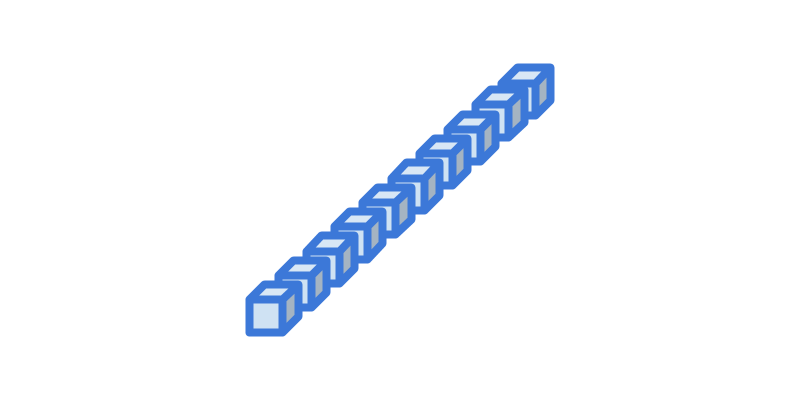
There are 1010 blue colored blocks in the picture.
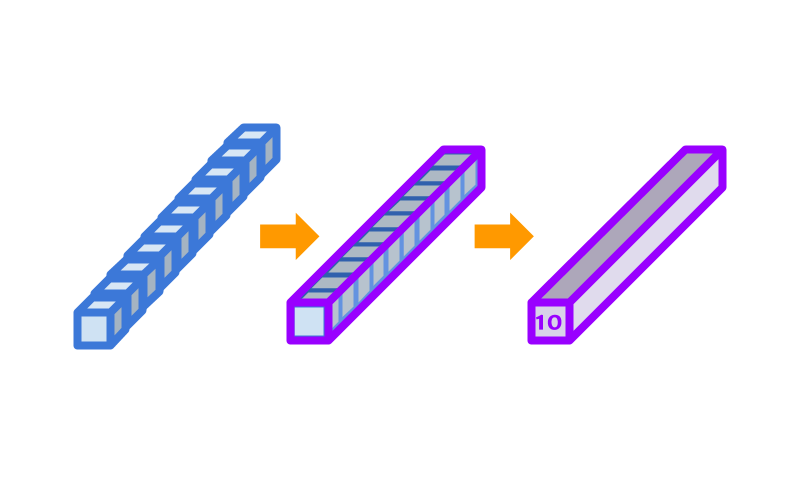
There are 10 blue color blocks in the picture. These blocks are packed into a purple block and marked 10. In this course, the purple block is used to represent 10.
Blue block represents 1 and the grouped purple block represent 10.
Consider that the smaller blue block is a lower place-value and the larger purple block is higher place-value.
Combining a 10 of lower place value into 1 of higher place value is grouping.
The word grouping means joining and combining together. The blocks were combined into one bigger block.
Grouping: 10 of a lower place value is combined to 1 of higher place value.
Numbers above 10

The number represented in the figure is 11. The purple block is used to represent ten and additional block represents 1. So, the total is 11.
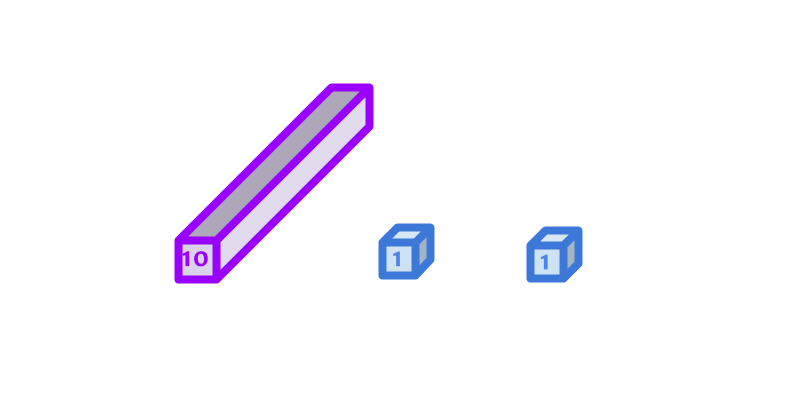
The number represented in the figure is 12.
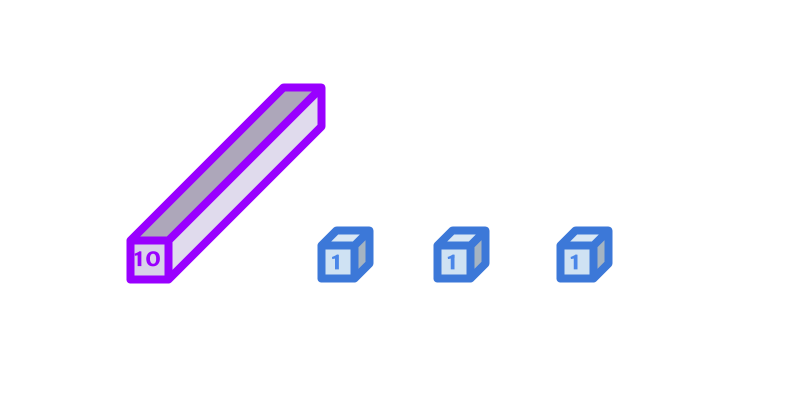
The number represented in the figure is 13.
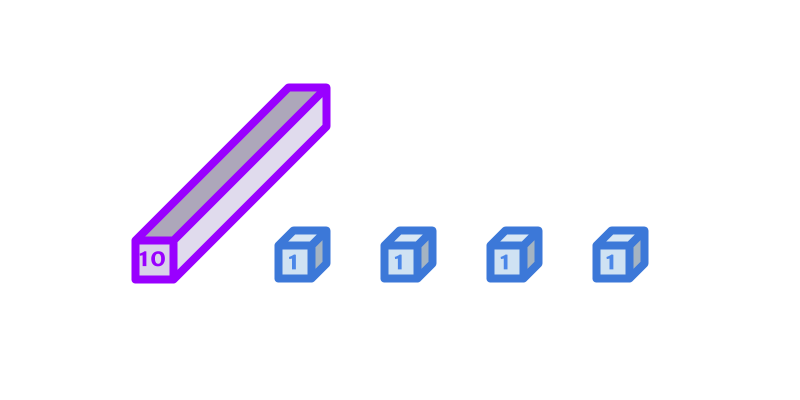
The number represented in the figure is 14.
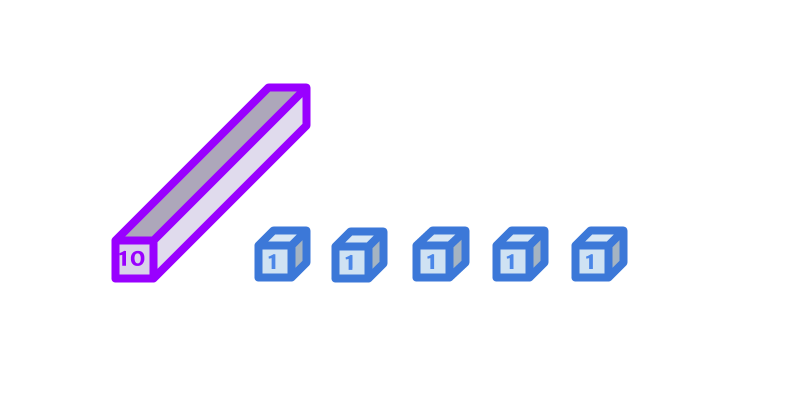
The number represented in the figure is 15.
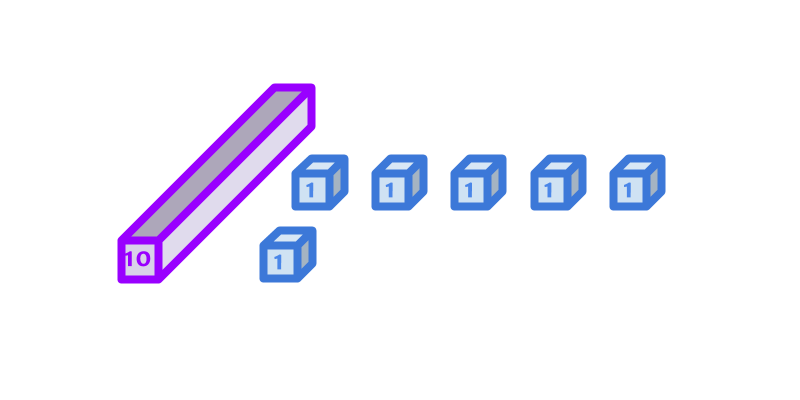
The number represented in the figure is 16.
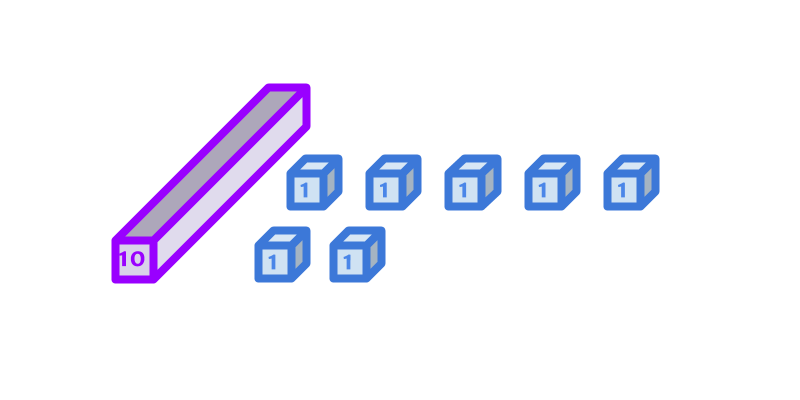
The number represented in the figure is 17.
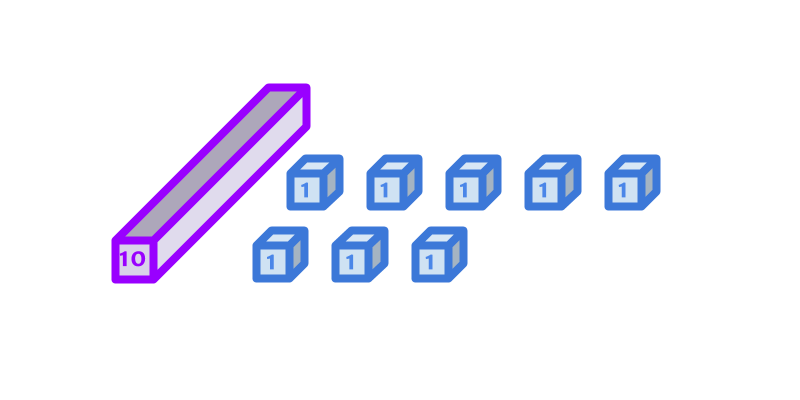
The number represented in the figure is 18.
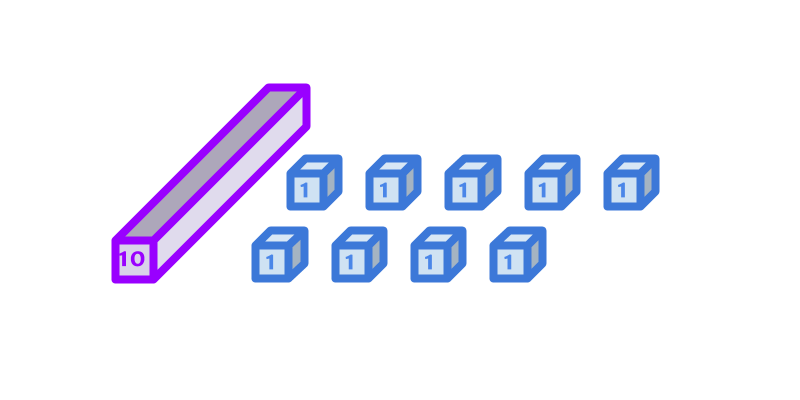
The number represented in the figure is 19.
Numbers above 10: The numbers above 10 are
11 (eleven),
12 (twelve),
13 (thirteen),
14 (fourteen),
15 (fifteen),
16 (sixteen),
17 (seventeen),
18 (eighteen),
19 (nineteen).
tens and units

The number represented in the figure is 20.
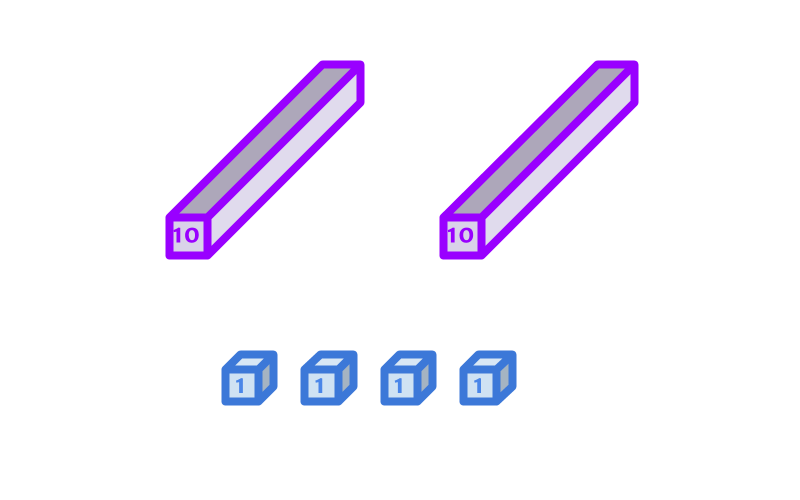
The number represented in the figure is 24.
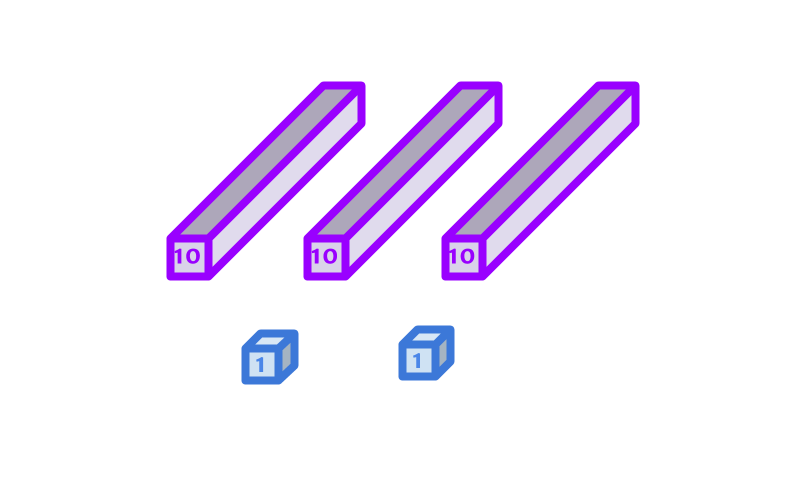
The number represented in the figure is 32.
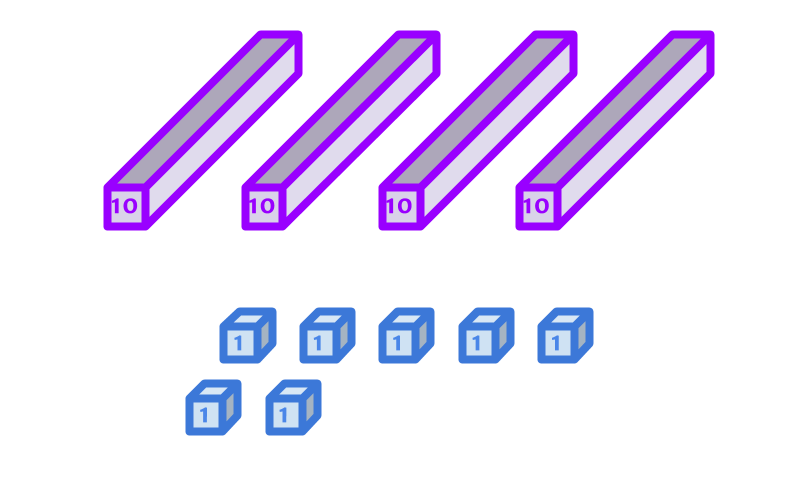
The number represented in the figure is 47.
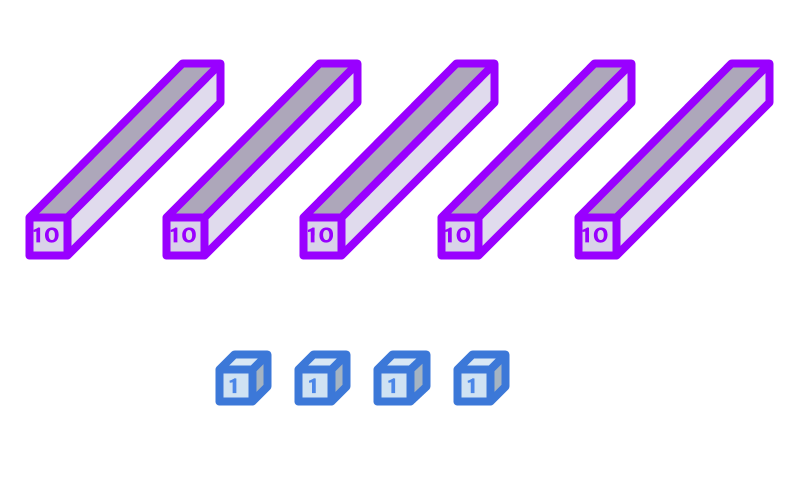
The number represented in the figure is 54.
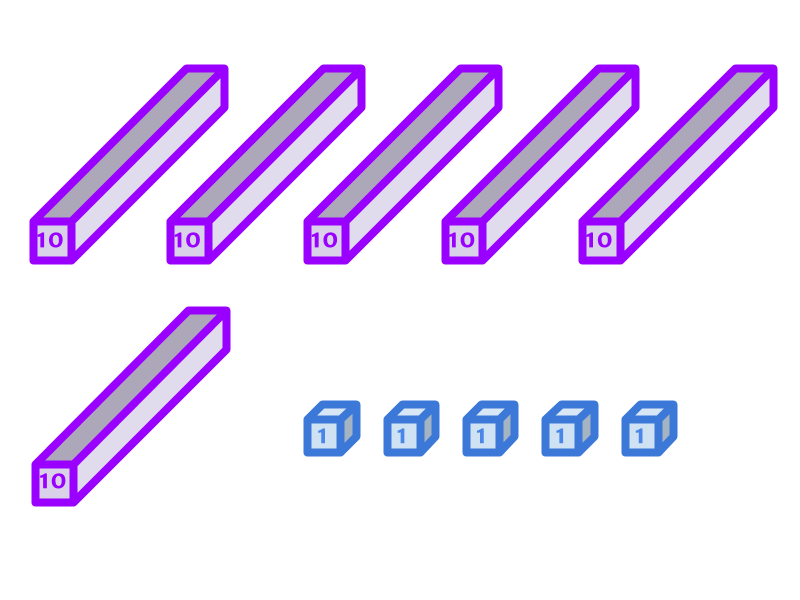
The number represented in the figure is 65.
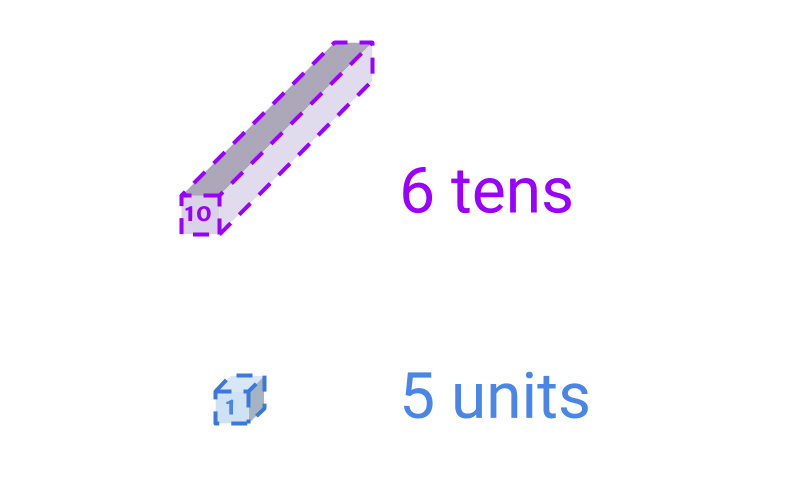
The number represented in the figure is 65.
Instead of laying out all the blocks, the representation gives the count of each of the block. The blocks are of sizes 1, and 10.
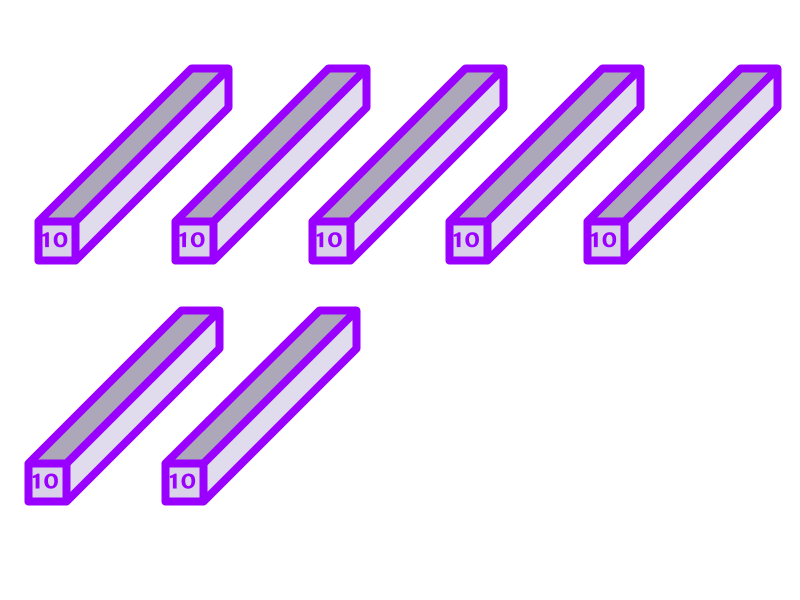
The number represented in the figure is 70.
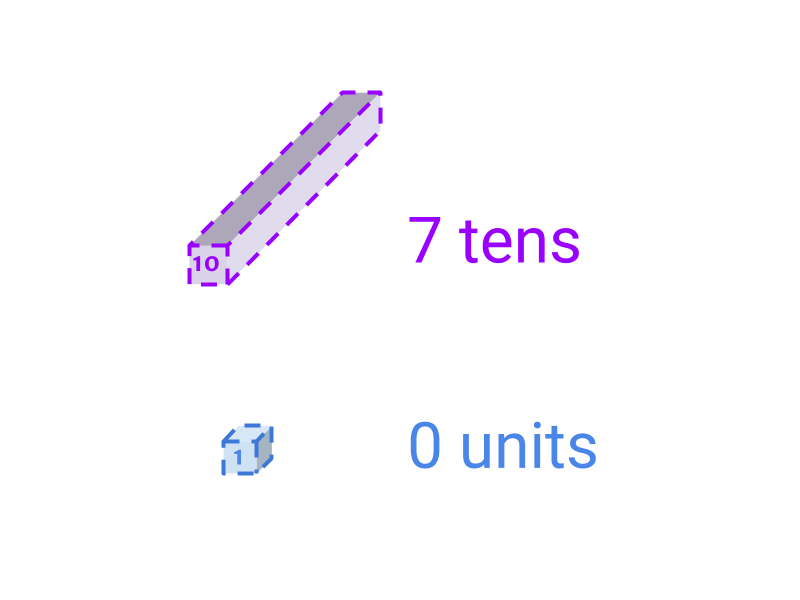
The picture provides an equivalent form of representing 70.

The number represented in the figure is 84.
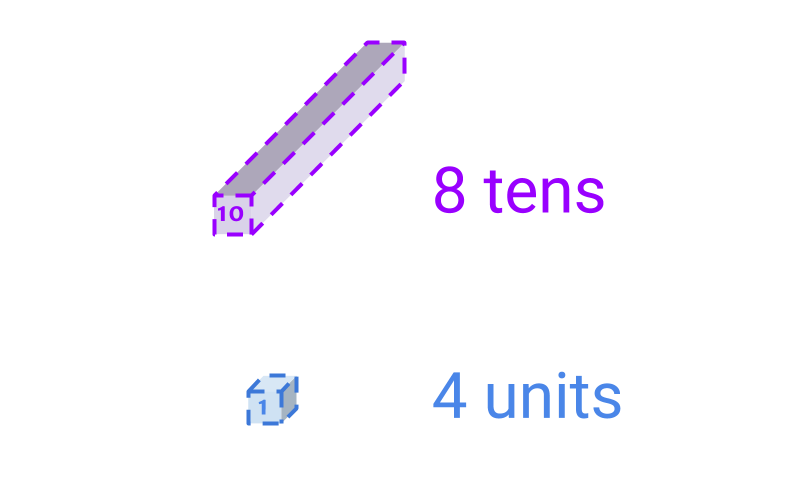
The picture provides an equivalent form of representing 84.
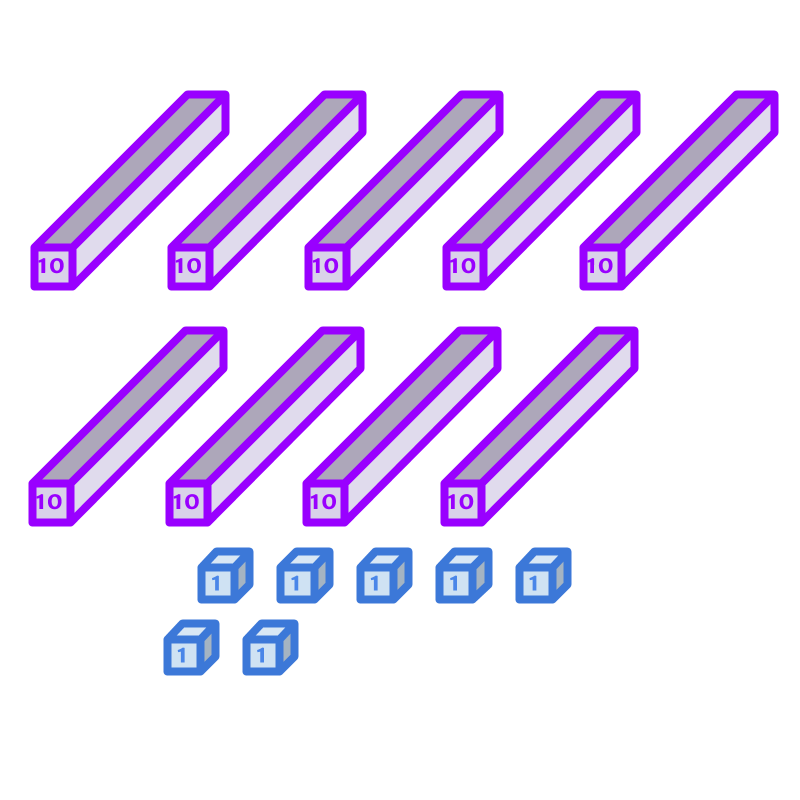
The number represented in the figure is 97.
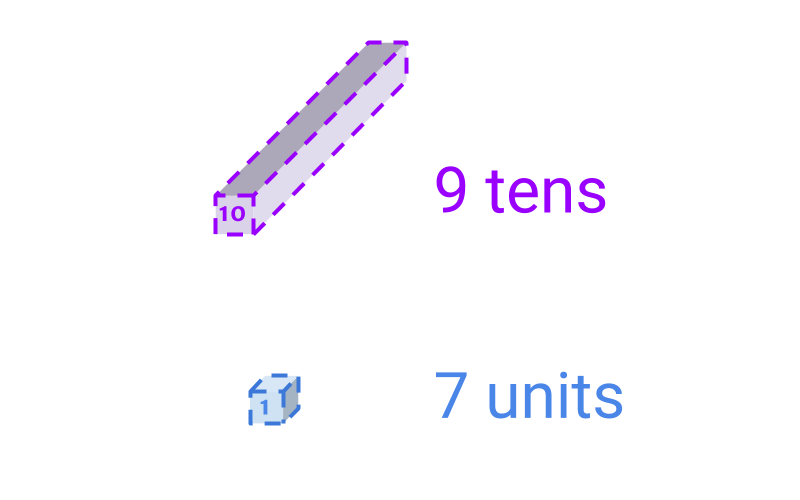
The picture provides an equivalent form of representing 97.
Numbers in the tens:
10 (ten),
20 (twenty),
30 (thirty),
40 (forty),
50 (fifty),
60 (sixty),
70 (seventy),
80 (eighty),
90 (ninety)
Hundreds and Large Numbers
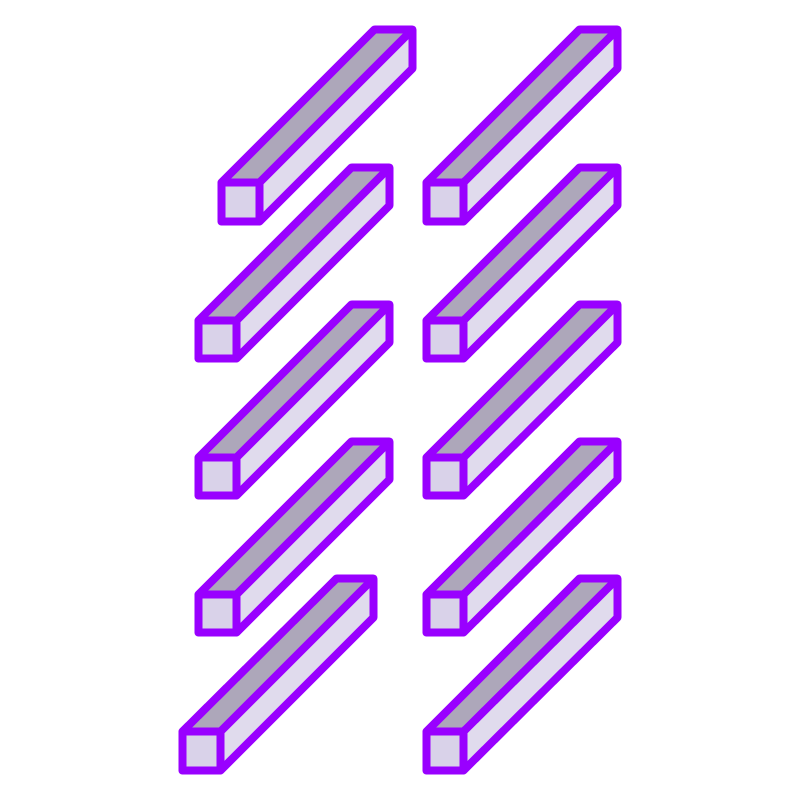
The number represented in the figure is 100.
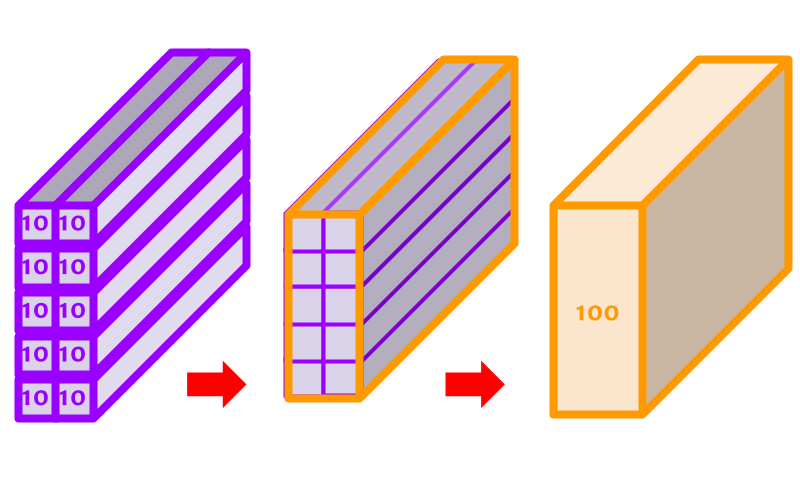
Note that 10 of purple blocks are grouped into an orange block. The orange block represents 100.
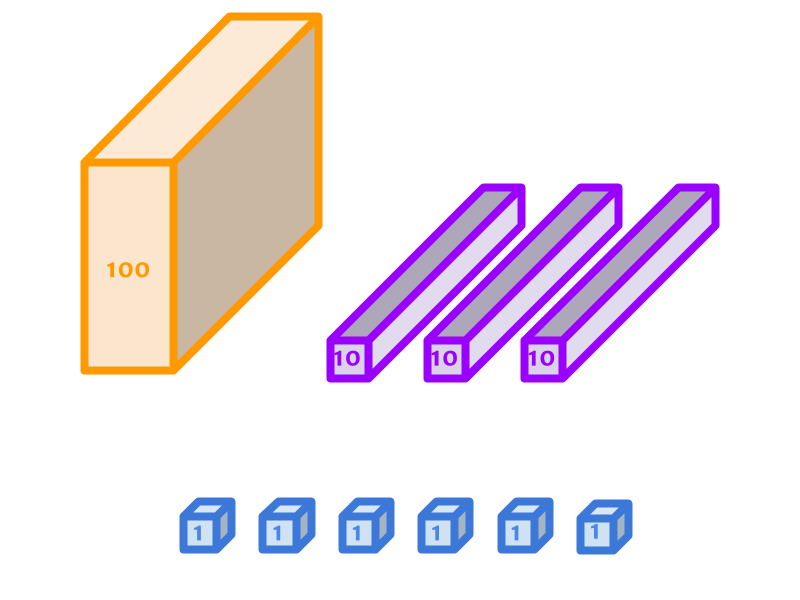
The number represented in the figure is 136.
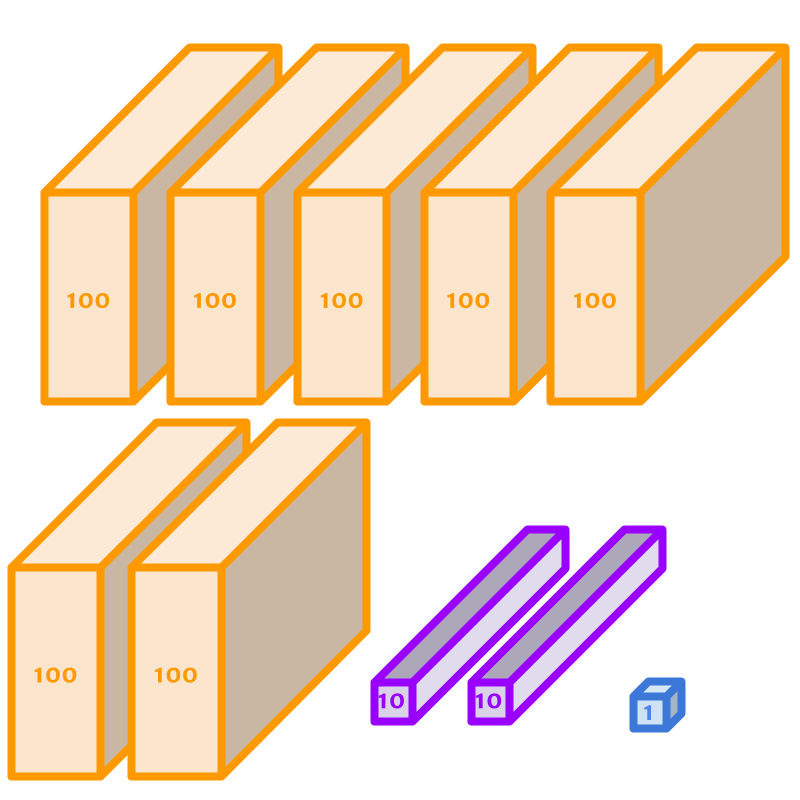
The number represented in the figure is 721.
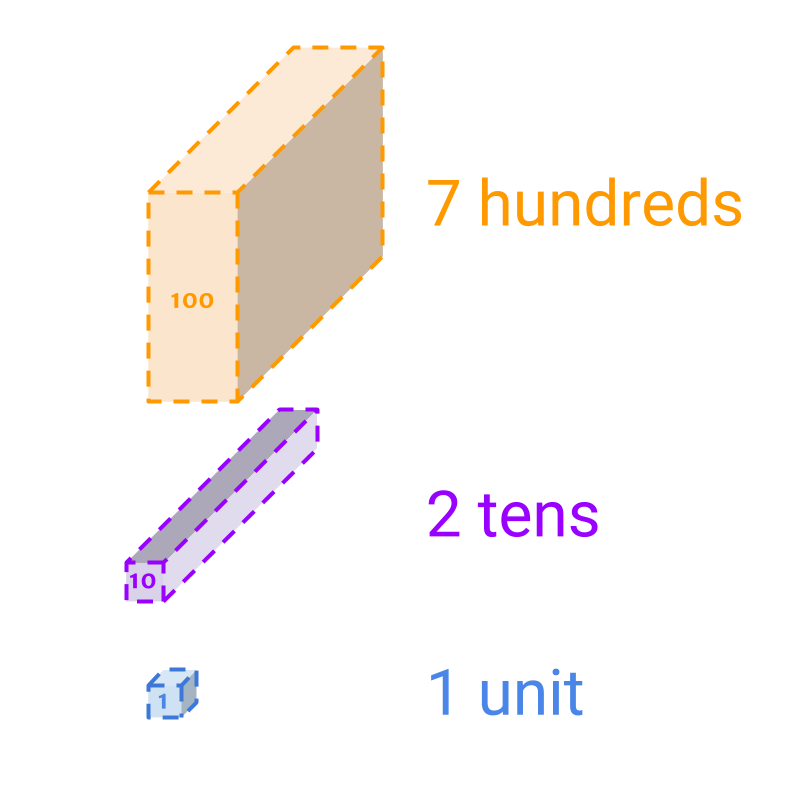
The number represented in the figure is 721. This provides a simpler form.
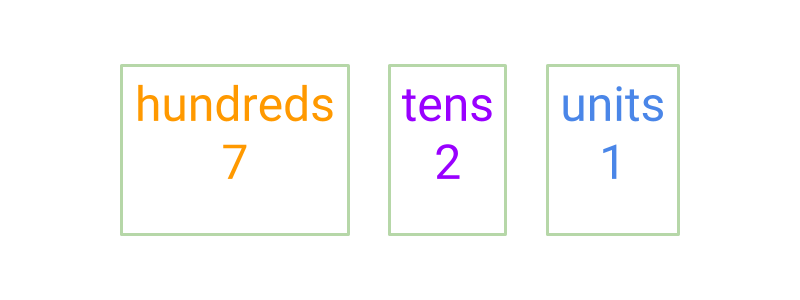
The number represented in the figure is 721. Instead of providing a pictorial representation of the blocks, the value is given in words. The values are hundreds, tens, and units, equivalently representing blocks of size 100, 10, and 1.
Numbers are represented as sequence of digits. If 721 is given, the number of digits are counted as 3 and the number is read as seven hundred and twenty one.

The number represented in the figure is 1000.
1000 is written as thousand.

The number represented in the figure is 5361.
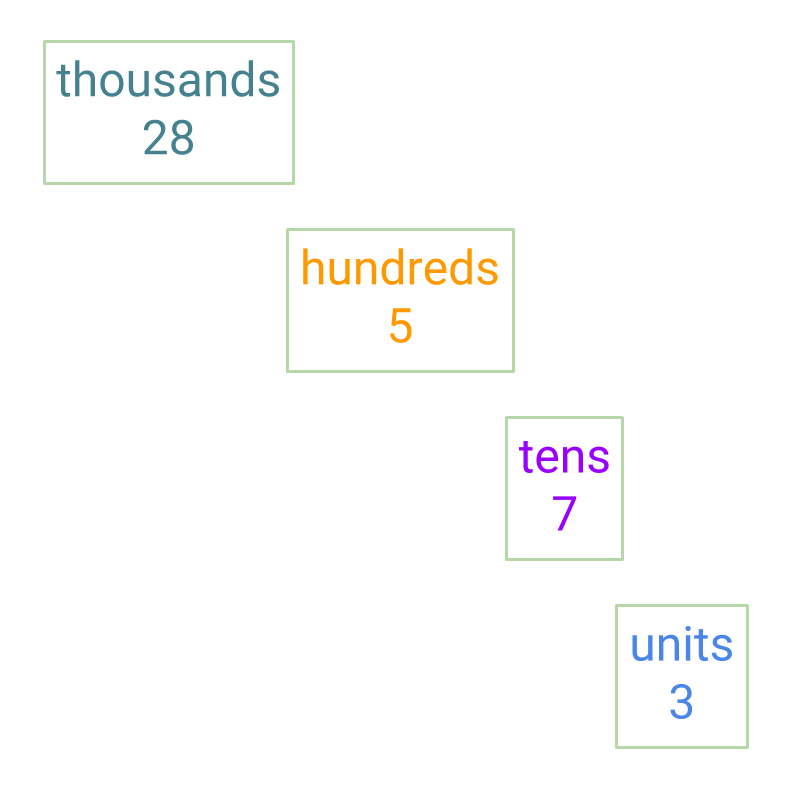
The number represented in the picture is 28573
Summary
The units, tens, hundreds, thousands, etc are explained and numbers upto 10000 are introduced.
 The figure shows grouping of 10 units to 1 ten. This grouping is reversible and de-grouped when required. And, units can be regrouped into tens.
The figure shows grouping of 10 units to 1 ten. This grouping is reversible and de-grouped when required. And, units can be regrouped into tens.
Grouping: 10 of a lower place value is combined to 1 of higher place value.
 The figure shows the representation of 84 in blocks.
The figure shows the representation of 84 in blocks.
 The figure shows number 84 in abstracted form 8 tens and 4 units.
The figure shows number 84 in abstracted form 8 tens and 4 units.
 The figure shows grouping of 10 tens to 1 hundred.
The figure shows grouping of 10 tens to 1 hundred.
 The figure shows the representation of 721 in blocks.
The figure shows the representation of 721 in blocks.
 The figure shows the representation of 721 in hundreds, tens, units format.
The figure shows the representation of 721 in hundreds, tens, units format.
 The figure shows the representation of 721 in number format.
The figure shows the representation of 721 in number format.
 The figure shows 5361 in numbers.
Large Numbers : The digits in large numbers are
The figure shows 5361 in numbers.
Large Numbers : The digits in large numbers are
1 (units),
10 (tens),
100 (hundreds),
1,000 (thousands)
10,000 (ten thousands)
Outline
The outline of material to learn whole numbers is as follows
Note: click here for detailed outline of Whole numbers
• Introduction
→ Numbers
→ Large Numbers
→ Expanded form
→ Face and place values
→ Approximation and Estimation
• Comparison
→ Comparing two numbers
→ Number line
→ Predecessor & Successor
→ Largest & Smallest
→ Ascending & Descending
• Addition Subtraction
→ Addtion: First Principles
→ Addition: Simplified Procedure
→ Subtraction: First Principles
→ Subtraction: Simplified Procedure
• Multiplication Division
→ Multiplication: First Principles
→ Multiplication: Simplified Procedure
→ Division: First Principles
→ Division: Simplified Procedure
• Numerical Expression
→ Introducing Numerical Expressions
→ Precedence
→ Sequence
→ Brackets